They say that when the construction of the famous Villa Savoye was completed in 1931, the owners shortly after, angrily notified Le Corbusier to go there as soon as possible, because the roof had begun to leak after the first rain that had fallen since the work was delivered. Indeed, the architect arrived immediately. The lady of the house showed him the small lake that had formed on the floor. He asked for a white sticky note. They gave it to him. Then he began to fold the paper again and again, until he made a boat of the kind that children make, gently placed it on the pond, and calmly walked away, leaving the astonished owners looking at him in disbelief!
This was Le Corbusier , one of the leading architects of the 20th century, a personality as strong as it is contradictory, marginal throughout his life, without any doubt the most charismatic theorist of modernity in architecture. On the occasion of the 56th anniversary of his death, on August 27, 1965, the Magazine attempts today a small retrospective on the paradoxical path of the man who was the main contributor to the urban revolution of the modern era, but also a "revolutionary" who could not to understand and comply with the demands of reality, often turning his theoretical vanguard into a practical utopia.
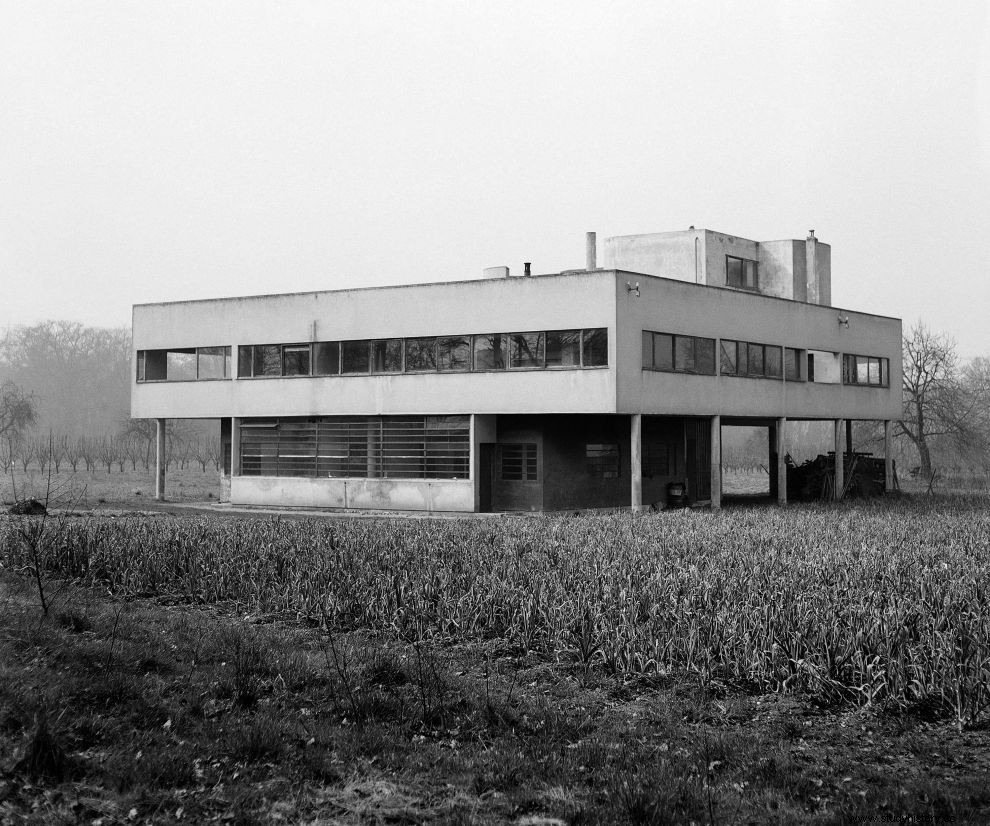
Charles Édouard Genre Gray, as his real name was, was born in 1887 in Switzerland from watchmaker parents and attended the school of applied arts in his hometown of La Chaux-de-Fonds, destined to follow in the family tradition. Multi-talented, he tried to choose between decoration, painting and architecture. He quickly decided that his curriculum did not cover him in the slightest, he considered it too "traditional" for his tastes and completely disconnected from modern reality, not hesitating to express his criticism in public. He himself, already in those years, had started working on private villas, such as the Villa Fallet, which he designed at the age of 18 for an engraver, a friend of one of his teachers.
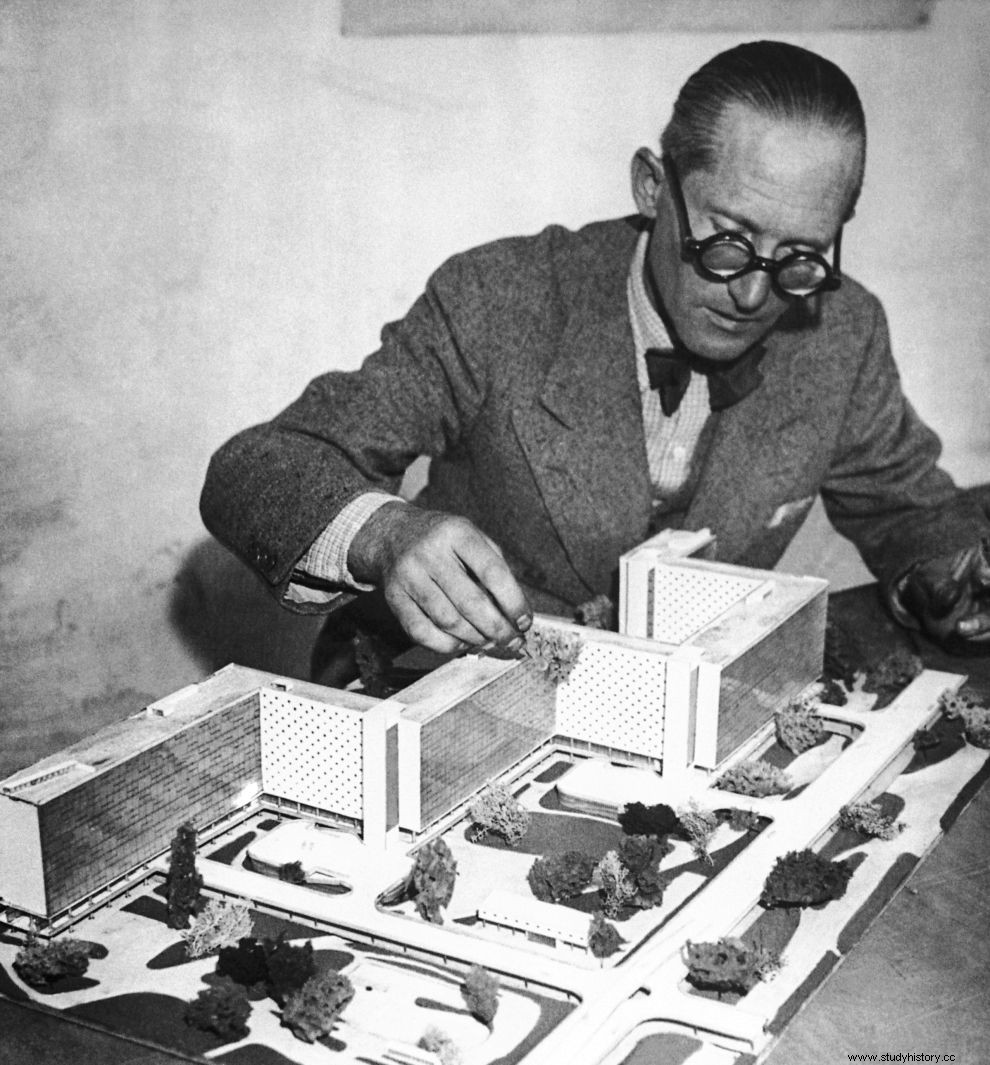
What fascinated him more than anything else was the direct relationship between art and industry, the coupling of architectural aesthetics with the given richness of engineering. He was carried away by "broad horizons" and the open, "living" quest for the unification into a "oneness," of history, form, and technology. He very quickly rejected the schools of art and architecture and decided that the "road" of understanding necessarily passed through travel and engagement with the act itself, far from theoretical labyrinthine dead ends. Throughout his life he boasted that he had never received a university degree, preferring to study under the contemporary masters of modernity.
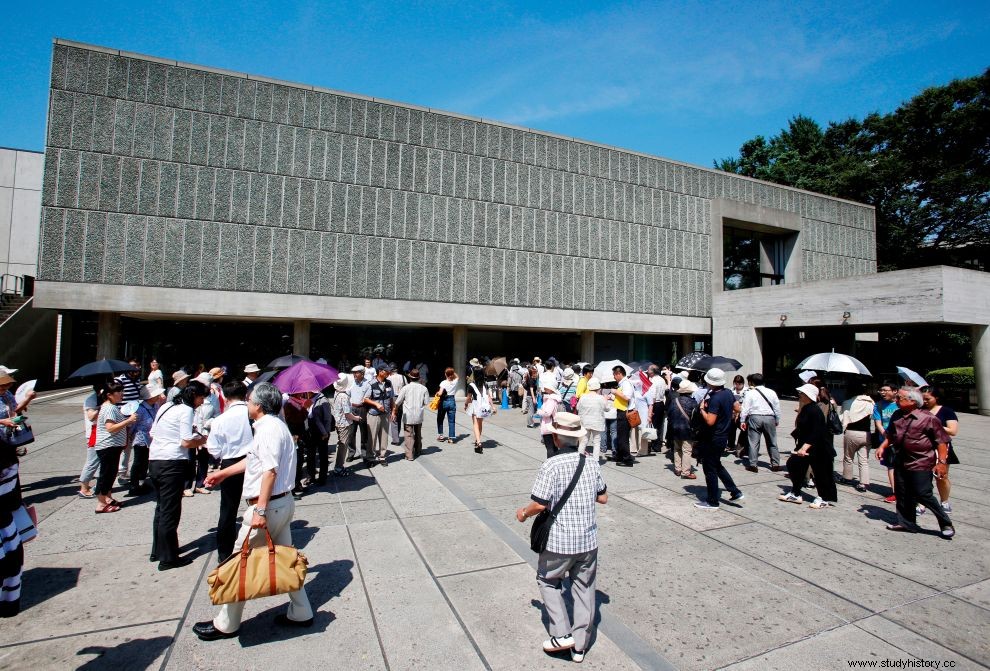
A milestone in his life was his association with two great forms of architecture of that time. First, in 1908, he studied with Auguste Perret, the Parisian "poet" of concrete, and then, in 1910, in the Berlin atelier of Peter Behrens, who tried to combine the beauty of architectural forms with industrial buildings. Le Corbusier settled permanently in 1917 in Paris and in 1930 acquired French citizenship. Alongside the construction of private homes for his wealthy clients (such as Villa La Roche), he was interested in the housing needs of the people, having in mind the construction of large complexes of workers' housing under industrial construction conditions.
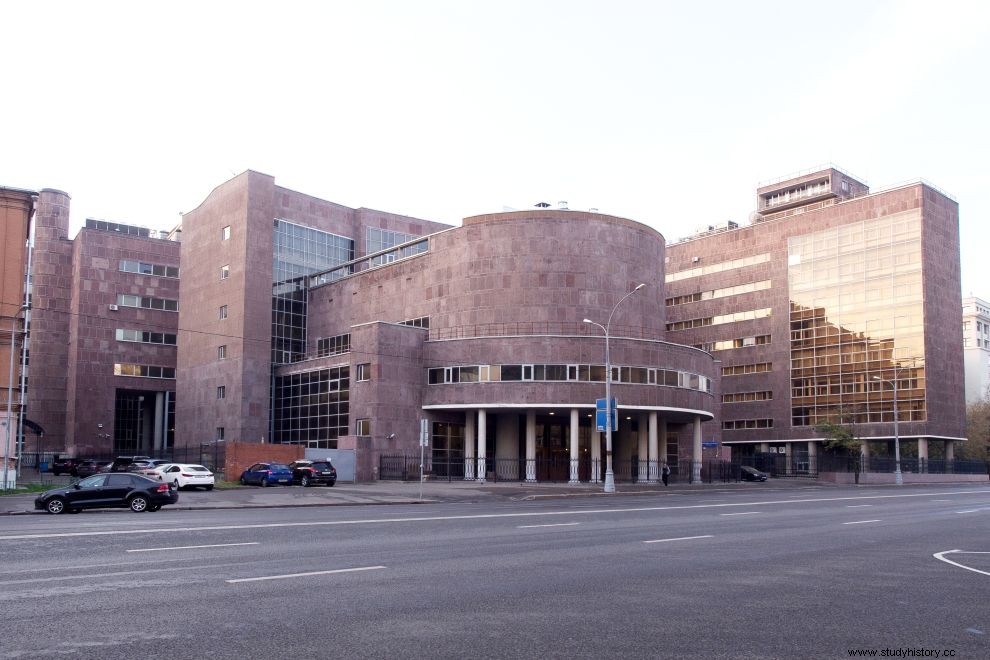
Already in the context of the rapid reconstruction of the houses that had been destroyed during the First World War, with the Dom-ino series of houses in Northern France, Le Corbusier introduced the technique of prefabrication. He categorically rejected the eclecticism of many of his colleagues (a variety of elements from different periods and rhythms, applied to a building), wanting to give "reason" to the residents themselves for the design of their homes. He patented the Dom-ino process (open-floor modular structure) and in 1921 presented his own view of housing, based on the "air, sun, space" triptych, to the magazine L'Esprit Nouveau, which had founded a year ago together with the painter Amede Ozenfan.
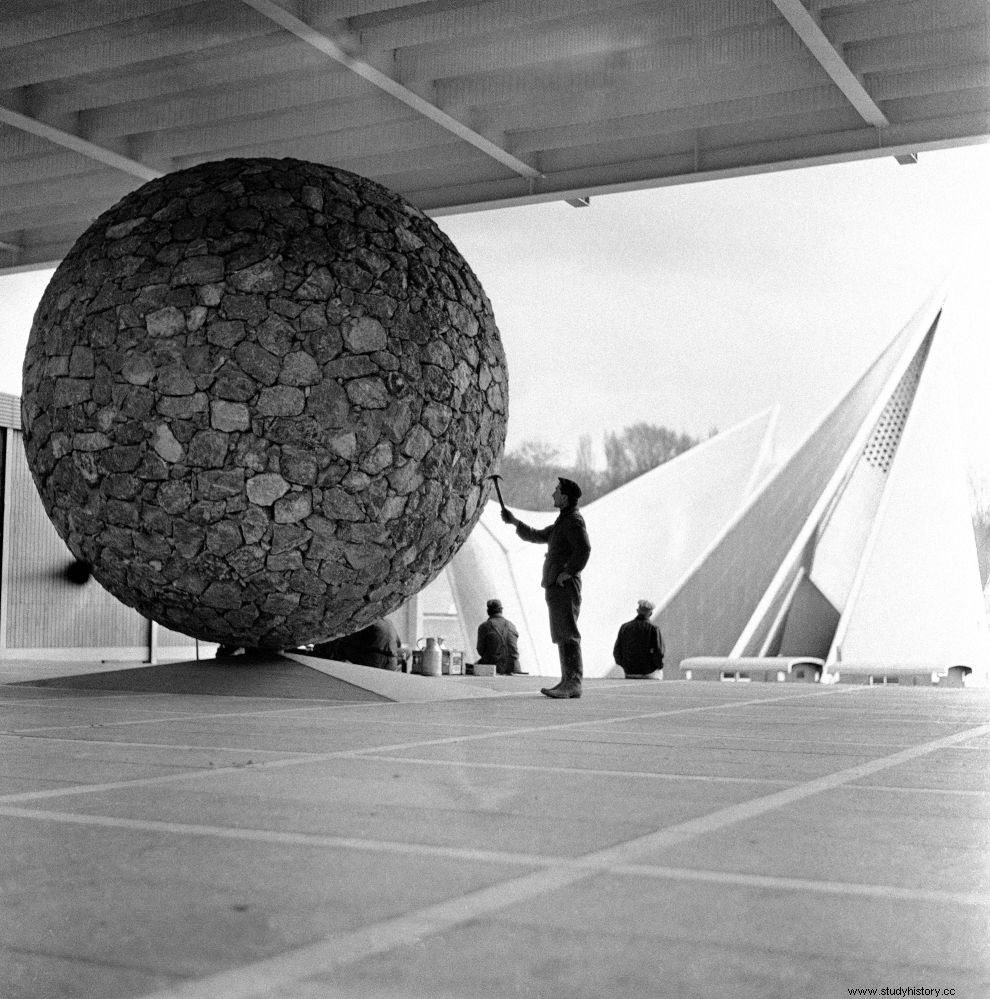
He adopted the pseudonym Le Corbusier and traveled the world, "studying" architecture through the observation of monuments, trends, styles and materials. "I haven't read a single architecture book, I haven't studied the seven rhythms of architecture," he said rather proudly in an interview with Igs Desalles shortly before he died. Through wandering and analytical observation, he arrived at his own system, the modulor, dominated by human-scale dimensions. From the early years of his involvement in the design of houses, "dwelling machines", as he called them, he applied the five main points of his "philosophy" architecture:gabled, flat roofs, free floor plan (open interior design), large horizontal windows and free facade.
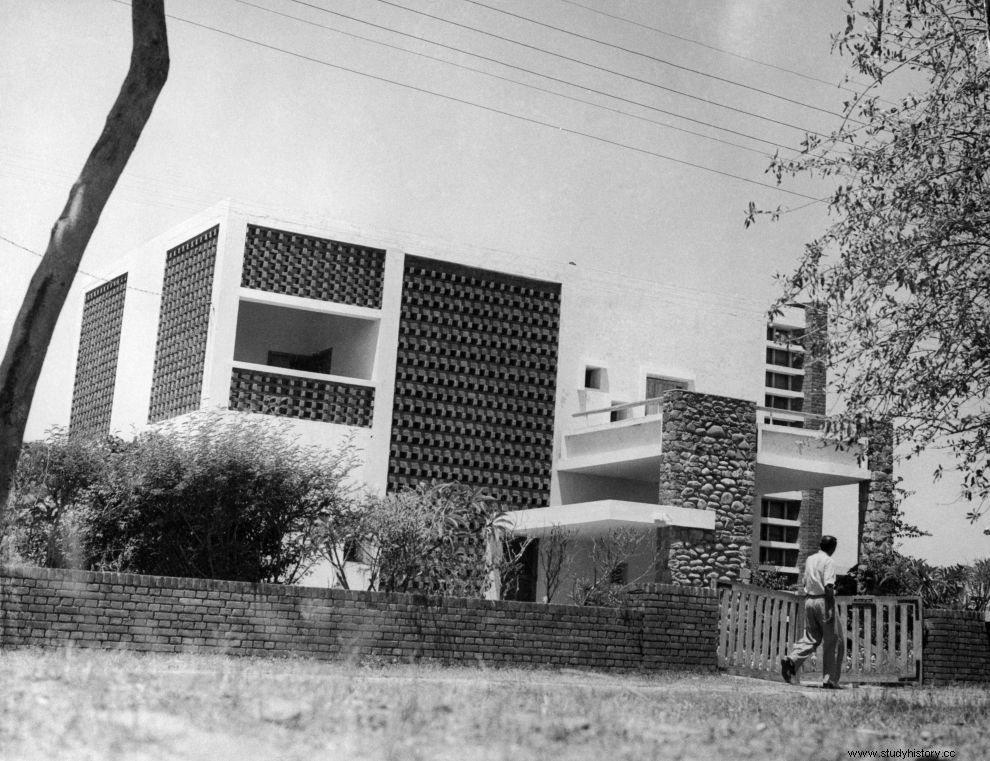
Of course, there "lurched" the danger of the practical exploitation of the space, which in the final analysis was a very basic factor of the architectural logic, as it evolved in the 20th century. Since the land was a "commodity", therefore everything that was built on it was the same, the easiest solution was the one that finally prevailed:closing the gate, one building sticking to the other, freedom of view and plan disappeared and zero development of the roof. Le Corbusier can with his idea about housing unit (unité d'habitation) formed the broader framework of the so-called popular apartment building, but the practical application showed that in the end it took a completely different orientation than the one he himself sought.
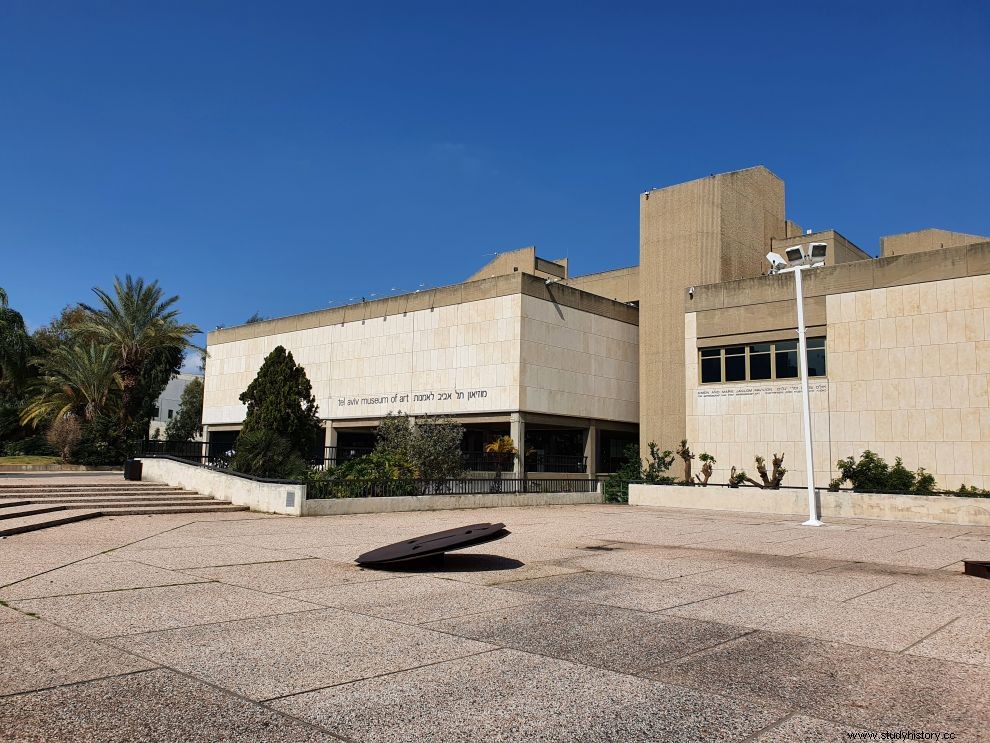
And somewhere there we encounter a paradox, which is repeated as a pattern throughout his work. His desire to design homes for the many led to him expecting a lot from the few, that is, those who had the capital and whom he had to convince of the correctness of his ideas and the value of his art, so that they would finance his designs. . His experience on Pesach is a case in point. Le Corbusier partnered in 1923 with an industrialist to build a building block with workers' housing in Pessac, a town on the outskirts of Bordeaux. For three years, until 1926, he would have the opportunity to implement his pioneering ideas.

His aim was to implement a "standard" architecture, integrated into a modern regulatory urbanism. But the initial enthusiasm stumbled into economic reality. Le Corbusier was devoted to his design and innovations (exposed reinforced concrete, flat ceilings, curtain walls), completely forgetting something very basic in the whole equation:cost and financing. The case ended in a big fiasco, since each residence ended up costing four times more than the original budget! The main problem for Le Corbusier was his complete refusal to adapt to "material" reality and to understand the balance that should exist between a design and its implementation.
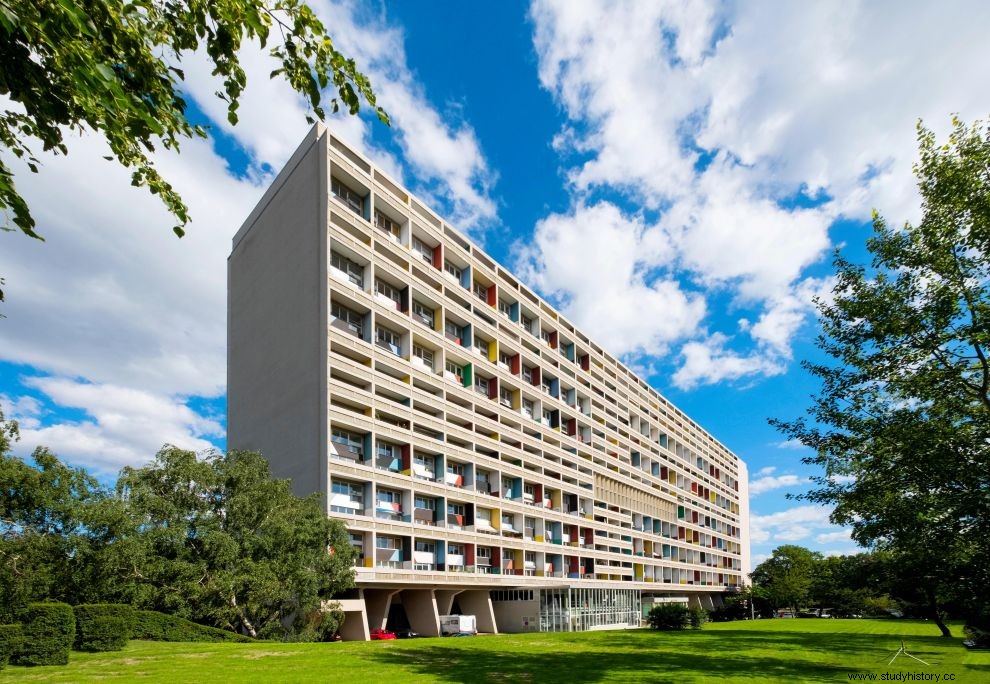
Every time he received a "no" from wealthy prospective funders, he thought it was "rusty minds" , unable to comprehend the magnitude of his genius. It is known that he always closely supervised the construction work on his plans and did not hesitate to raise his voice, with the slightest deviation from his original idea. It is also a given that he was gifted with an inexhaustible but also "disciplined" imagination, in the sense that he was stubborn whenever any of his ideas were not enthusiastically received. Something that was also seen at the International Conferences of Contemporary Architecture (CIAM), of which he was one of the main animators.
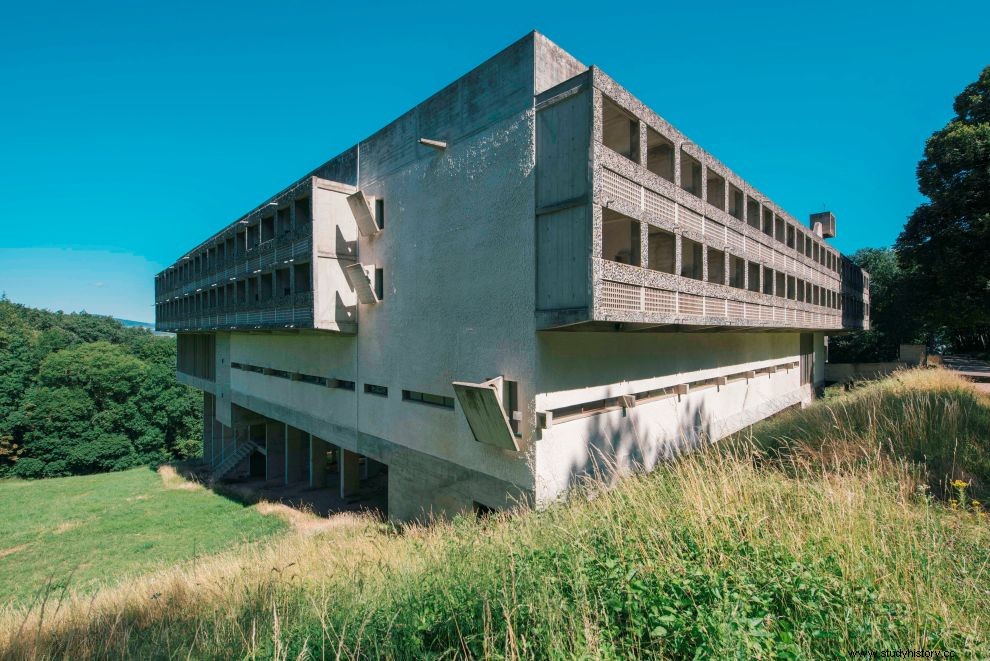
The CIAMs were periodic meetings in which Le Corbusier, together with other like-minded architects, elaborated from 1928 onwards the principles of functional urbanism. These principles (simplicity of forms, separation of functions in space, recovery of the essence of the building, purity, order and logic of forms, the color white to create a new, "stripped" aesthetic, etc.) were codified after the Congress of Athens in 1934, in a document that remains to this day one of the fundamental texts of modern urban planning, the Athens Charter. Of course, as expected, its drafting caused reactions among the signatories.
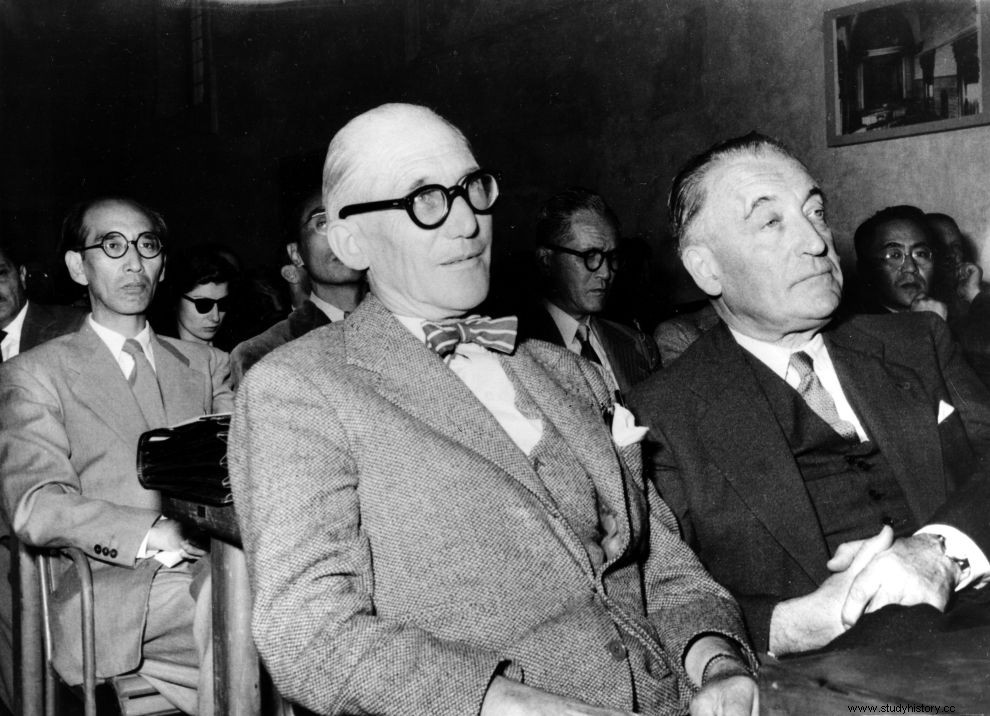
Why; But because Le Corbusier drafted almost the entire final form of the text, which was published in 1943 in France, bypassing his colleagues, who were tired of his authoritarianism. The truth is that Le Corbusier had no particular "sensibilities" in matters of democratic participation . You were either with him or against him, at least that's how he understood the "game" himself. Determined to find at all costs the means to build according to his plans, he tried to persuade governments of countries around the world to support him financially, to implement his own, subjective architecture, whether it concerned public housing, or large public buildings.
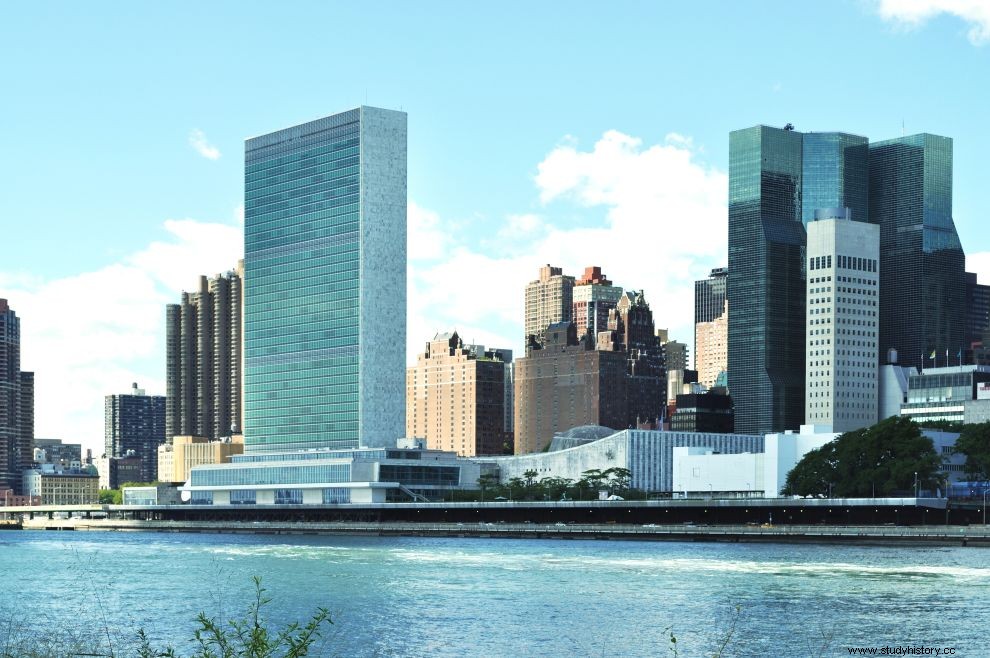
In 1943 he founded Ascoral (Constructors' Assembly for Architectural Renewal), whose basic ideas, once again, formed the backbone of post-war European urbanism. In 1947 he brought about a small revolution, when he created the"Marseille Apartment Building" , the so-called residential unit, a social housing building, a "vertical village", an apartment building of gigantic dimensions with apartments-maisonettes, but also hotels, shops, kindergartens, a library, a screening room, a gym, etc. Four more such buildings followed (Nade , Fermini, Brigitte and Berlin), all with "wild" exposed concrete and painted with strong primary colors.
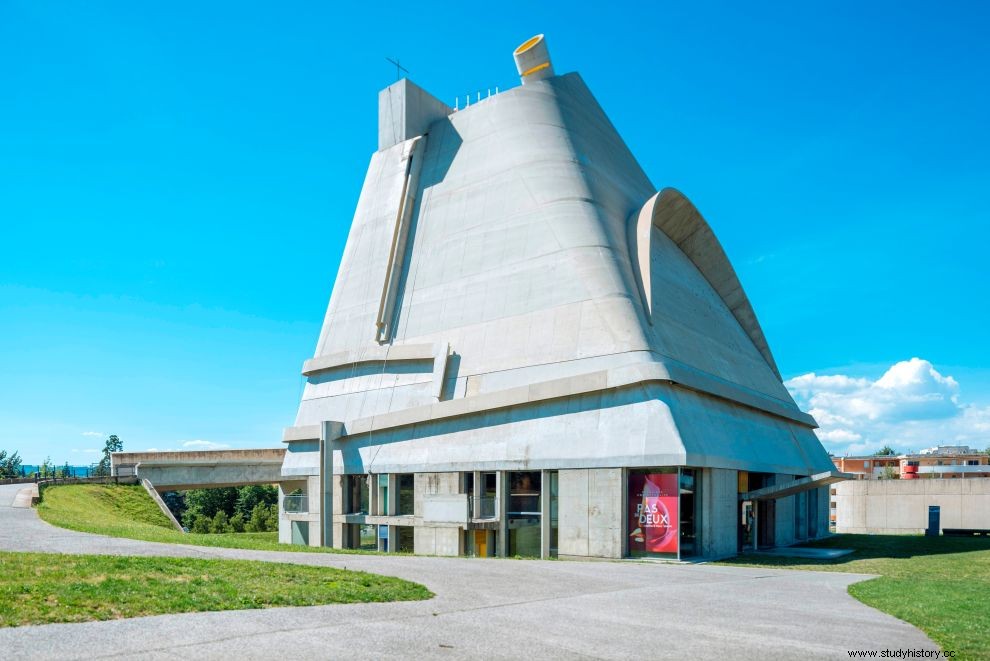
According to him, three were the main elements of urban planning, light, greenery and the sun, while the materials for building a city should be "the sky, space, trees, steel and cement, in this order and hierarchy". He believed that the modern house should be a "machine" for residence, adding that his own architecture was the one that could offer people silence and peace. One of his favorite quotes was that "the home is the temple of the family". And how "if the sun enters the house, it also enters a little into your soul". He admired the Parthenon , whom he characterized as a real "revelation".
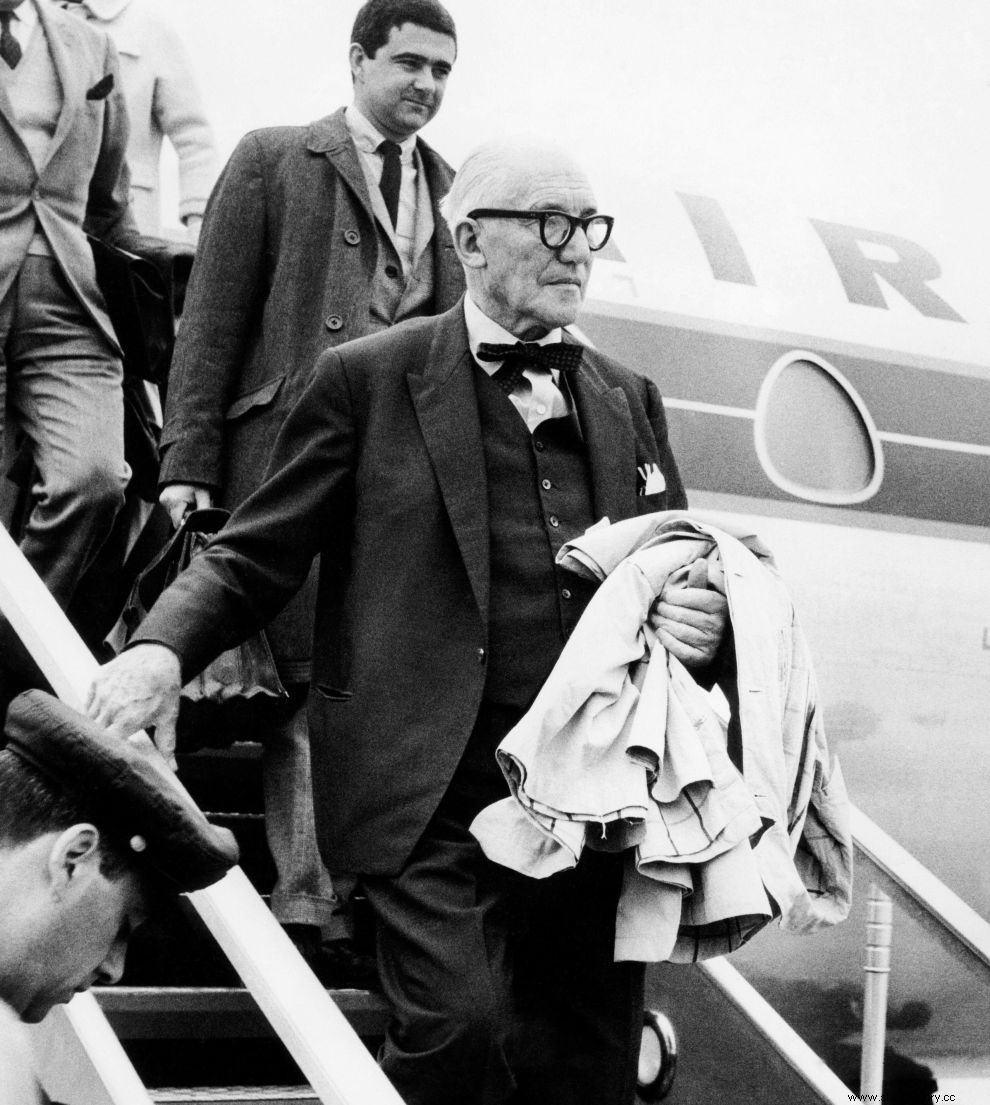
"Finally I arrived in Athens and saw the Acropolis. I stayed there for seven weeks, in daily contact with the monuments, with great passion and fervor. I discovered then that architecture is the game of volumes , the game of contours, one hundred percent invention, which depends entirely on the creation of the one who paints" (from his interview with Igs Desalles, in 1965, a month before his death). When he had first traveled to New York, he had just disembarked from the transoceanic, he was besieged by a crowd of journalists, to whom he said that “the skyscrapers of the city seemed too small to him.” By the same token, he had expressed his desire to literally level Paris, preserve only its monuments, and rebuild it from the beginning!
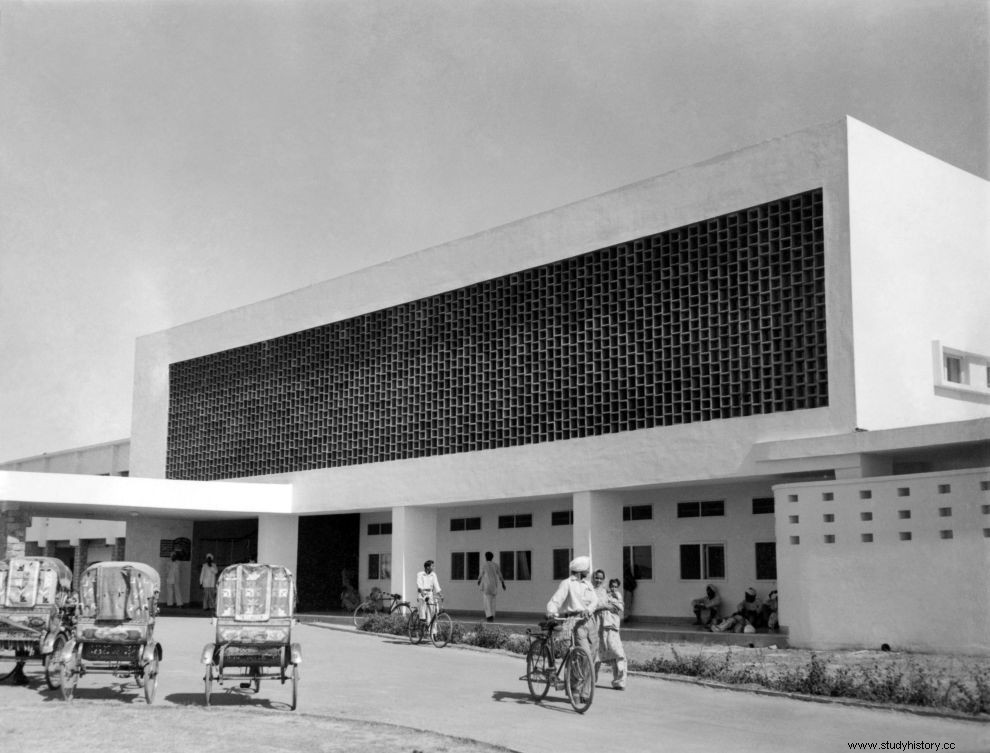
Le Corbusier was not only a charismatic architect, he also had a very good and "sharp" pen, which he did not hesitate to use against conservative academic circles, accusing them of clinging to the past. As we wrote above, he always considered his opponents (basically, those who had a different opinion from him), ignorant, narrow-minded and stupid, which means that he was deeply elitist. He believed that only he knew what was good for the "masses", so that we come again and again to the paradox that dominated his life:on the one hand, no one questioned his prestige and value as an architect, on the other hand, almost no one assigned him large-scale projects.
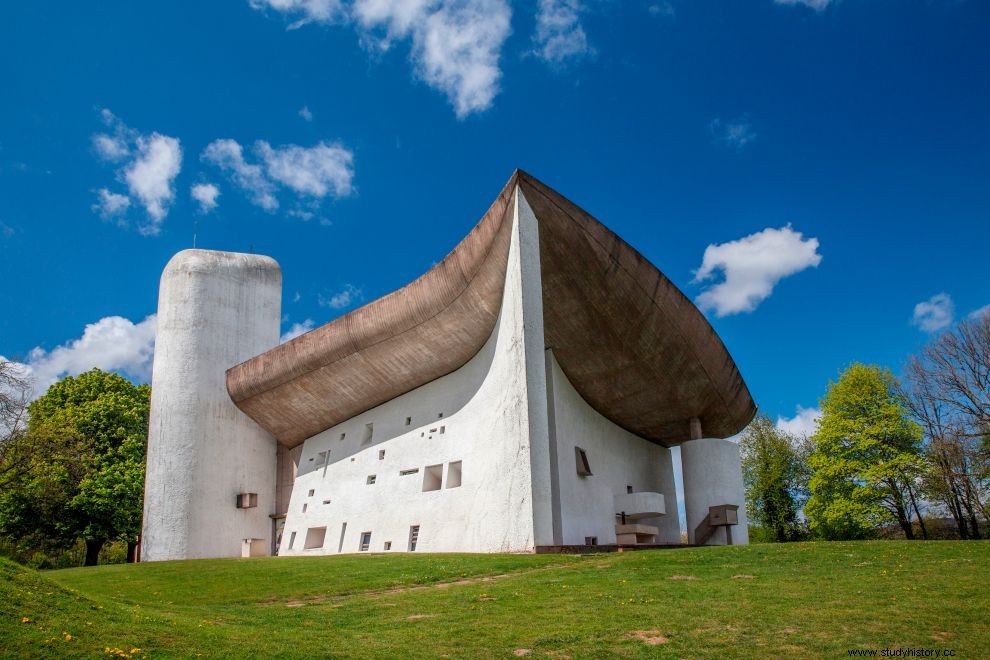
Incurably selfish, but also headstrong, he spent his life begging public authorities around the world to entrust him with programs that would allow him to realize his greatest dream, namely to become an architectural "leader" of spatial planning, urban planning and social organization. His authoritarian behavior, but also his complete refusal to compromise, largely deprived him of many assignments, but this did not deter him in the least. On the contrary, as much as he was disappointed by the "no's" (mainly those of the French), he considered that his architectural and urban planning "vocabulary" sounded "unusual", precisely because he was a genius, therefore intended only for special minds.
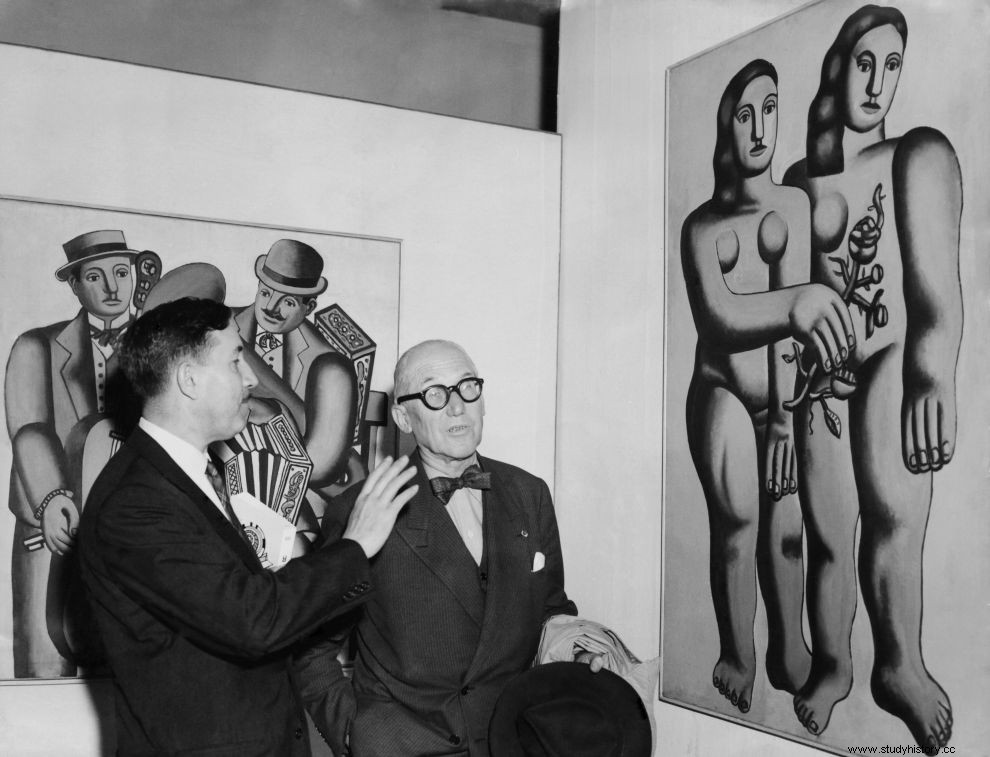
It may have lost the "bet" of the post-war reconstruction until the mid-50s, but this marginalization did nothing to prevent its reputation from spreading in France and abroad. However, he left his mark in many countries around the world by designing and building magnificent architectures, such as the headquarters of the Union of Soviet Cooperatives, the Chapel of Our Lady of Ronshan, the building of the city of Chandigarh in India, the National Museum of Western Art in Tokyo, Saint Pierre Church, Saint Marie de la Tourette Nunnery, Maison Curutchet in Argentina, Weissenhofsiedlung in Germany and many more.
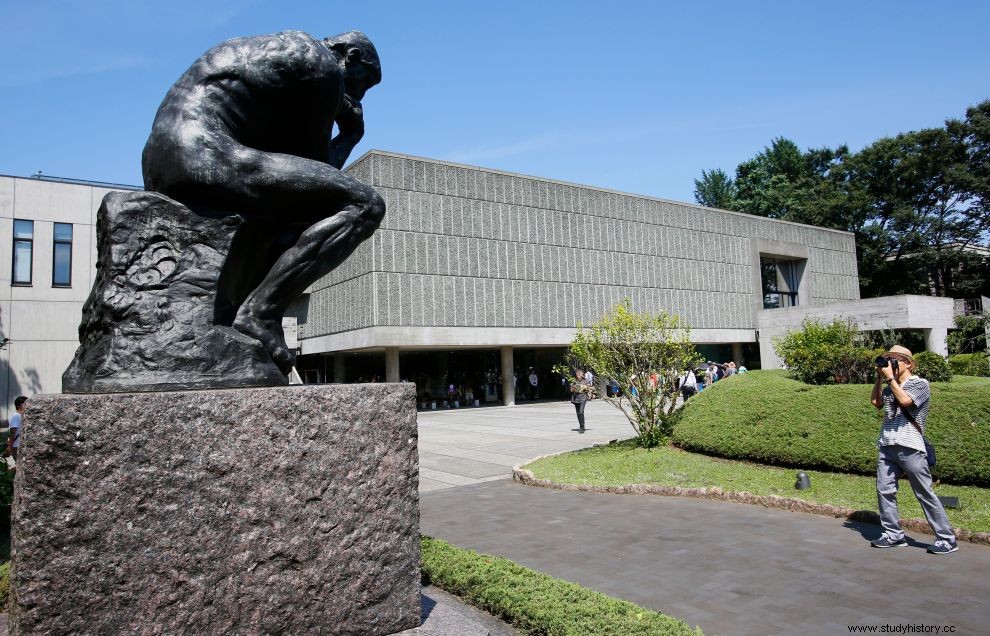
In total, Le Corbusier created 42 major urban projects and 75 buildings in 12 countries , using primarily - especially after World War II - exposed concrete, stone and exposed brick. In addition to these, it is estimated that there are still about 450 of his paintings, 8 frescoes, 350 prints, 40 tapestries, 50 sculptures, 7,000 works on paper and several hundred collages. The volume of archives he left behind could be described as unreal:500,000 documents, 38,000 maps, 6,000 plans, as well as travel notes, photographs and books, all archived by him. A real treasure in every way, constantly studied by students and admirers from every corner of the earth.
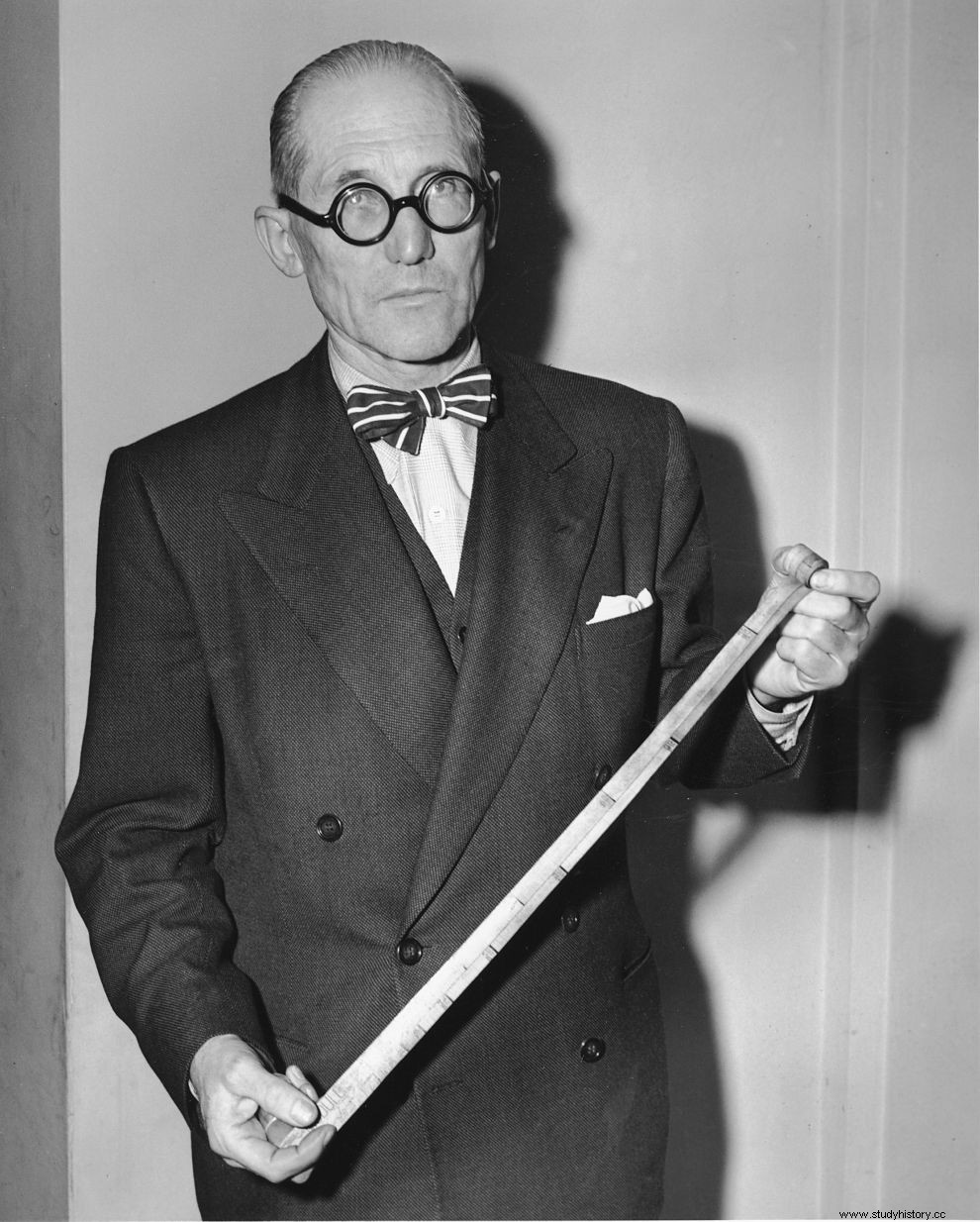
Even towards the end of his life, his last summers, he spent in a wooden "hut" of his own inspiration and construction, the famous Cabanon de vacances, on the sea of theCôte d'Azur . There, on the French Riviera, he died on August 27, 1965, of a heart attack after swimming in Cap Martin. Today, 56 years after his death, his legacy remains valuable not only for architecture, but for art as a whole. Pioneer, subversive, communicative, unyielding, versatile, Le Corbusier marked the entire 20th century with his ideas and creations, opening new, unexplored paths in the logic of urban planning.
He undertook the design and production of "objects" of any scale, from dwellings to temples and from armchairs to entire cities, but always and everywhere his virtues manifested themselves, in whatever field he worked. His eternal respect for technology, as the main driving force of the human intellect, but also for classical values, as a result of man's relationship with cosmic order and harmony, stamped his architectural perception in every manifestation. He divided the world of architecture like few others, but he never hesitated for a moment to walk the lonely path of the revolutionary, who was unable to comply with the dictates of reality, "building" his personal dream, his own aesthetics, his own rules and his own principles.
* Sources:fondationlecorbusier.fr, architecturaldigest.com, Larousse-Le siécle rebelle, repository.kallipos.gr, slus.gr, ert.gr/ert-arxeio, elculture.gr, wiki
